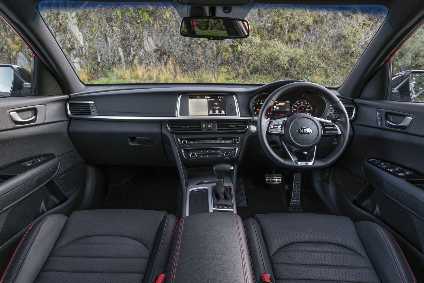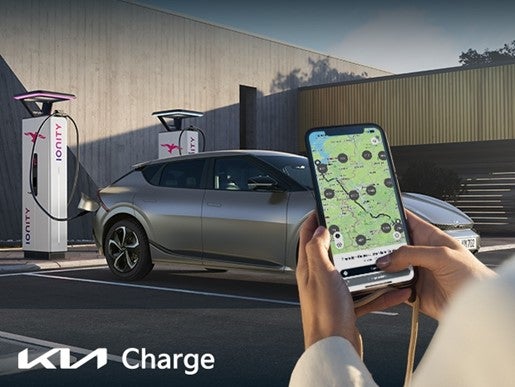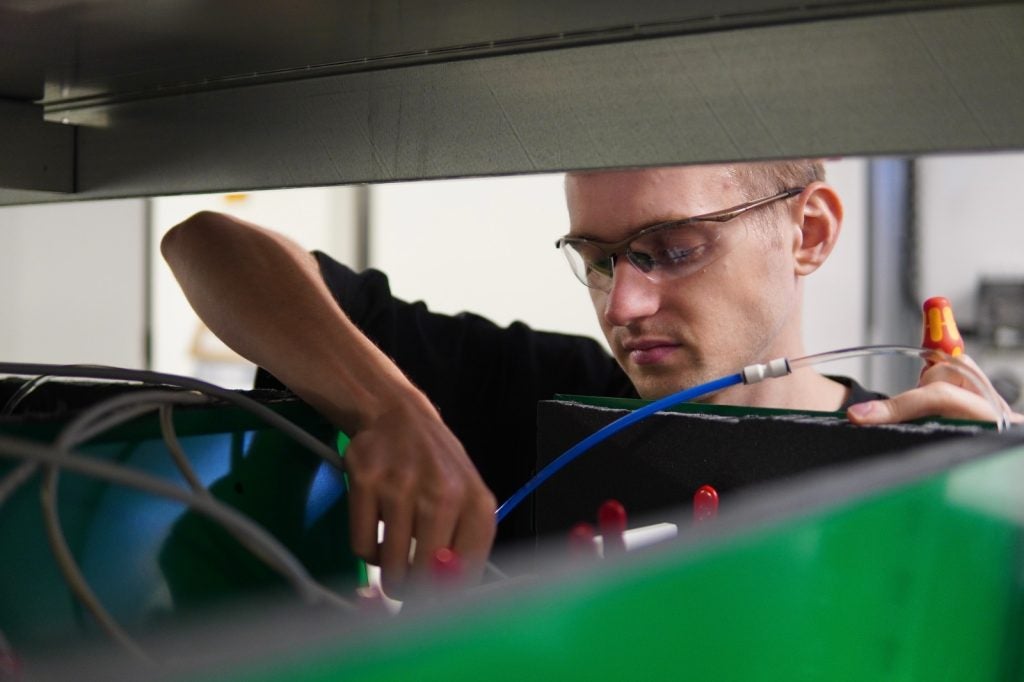
Sold as a four-door saloon or five-door Sportswagon, the facelifted Kia Optima range made its debut at the 2018 Geneva motor show. Continuing QUBE/just-auto’s review of interior design and technology trends, we take a look inside the estate version to see what has been refreshed.
Business drivers are the primary customers of the Sportswagon. But before we go any further, let’s get one question out of the way. How significant a model is it? “Very,” states a Kia spokesperson. “In some European countries the Sportswagon commands 80 per cent of the D-sector sales, and overall it will take about 66 per cent of Optima sales in Europe. Three out of every four sales will be to fleets.” The Optima’s rivals include the likes of the Skoda Superb, Vauxhall Insignia and Ford Mondeo.
On first glance, some notable exterior design changes to the Sportswagon include a revised front bumper and headlamps. The grille also features a little more chrome and some new designs are now offered for the model’s 17- and 18-inch alloy wheels.
Inside, the refreshed cabin features a new-look D-shaped steering wheel and satin-chrome trim on the centre console which extends across the dash. There are four trim lines for the Optima Sportswagon, namely the ‘2’, ‘3’, ‘GT-Line S’ and ‘GT’.
Grade 2 models come with black cloth upholstery; 3 versions have black cloth with faux leather upholstery; GT-Line S models feature black leather upholstery with red stitching and GT versions boast red leather upholstery with black bolsters and red stitching. Our press review 3 was equipped with an eight-way power-adjustable driver’s memory seat with four-way electronic lumbar adjustment, heated front seats and steering wheel. The black cloth seats incorporated faux leather sections with satin chrome highlights on the touchscreen bezel.
Mobile office
How well do you really know your competitors?
Access the most comprehensive Company Profiles on the market, powered by GlobalData. Save hours of research. Gain competitive edge.

Thank you!
Your download email will arrive shortly
Not ready to buy yet? Download a free sample
We are confident about the unique quality of our Company Profiles. However, we want you to make the most beneficial decision for your business, so we offer a free sample that you can download by submitting the below form
By GlobalDataA comfortable and spacious place to sit, the Sportswagon features the same horizontally structured dash layout as the saloon with the centre console angled at 8.5 degrees towards the driver. The eight-inch bright touchscreen positioned centre stage is very intuitive to use, allowing you to prod and swipe to access the navigation, infotainment and various car settings. The screen is also linked to a rear parking camera plus with three other cameras that collectively provide a bird’s-eye view of the car manoeuvring back and forth when parking. The GT-Line S comes fitted with Kia’s Smart Park Assist System that relieves you of the drama that can come with parallel parking.
More driving, less fiddling
The fascia is divided into upper display and lower control zones, with the number of buttons and switches kept to a minimum, thereby giving the dash a less cluttered look. We also found the Optima’s substantial and clearly displayed buttons lined up beneath the screen infinitely easier to use than some fiddly, hit and miss buttons found in other cockpits.
The infotainment system offers Android Auto, Apple CarPlay, Kia Connected Services powered by TomTom and a Harman/Kardon eight-speaker audio system.
Handy USB charging points are located in the front and rear of every Optima although the GT-Line S offers a wireless mobile charger concealed in a neat little cubby-hole directly ahead of the gear stick.
Ambient lighting
Further mid-life facelift interior features appearing in the GT-Line S and GT include ambient lighting around the dash which flows down and around door panels. The driver can choose between six different colours – or assign colours to individual driving modes. By default, lighting floods the cabin with a soft green glow in Eco mode, while Sport mode turns lighting to red and Smart mode fills the interior with soft blue ambient lighting.
Cavernous cabin
As we would expect, the estate has bags of luggage room (552 litres of cargo space behind the rear seats, to be precise), including two useful underfloor storage boxes, and some 1,686 litres with the 40/20/40 split rear seats folded. Pulling a certain lever allows the seat backrests to tumble forward without getting tangled up with trailing seatbelts or obstructed by headrests. Rear legroom for tall adults is also pretty good even with similar-sized front seat occupants.
A wide tailgate and low lip made it easy to load student clobber inside and bikes on a rack ready for the start of a new academic year. A powered tailgate on the GT-Line S and GT models opens automatically when the smart key comes into close proximity for more than three seconds.
Advanced driver assistance system
The variant we took out last week was a 3 that bristled with advanced driver assistance system (ADAS) technologies, including autonomous emergency braking, smart cruise control, rear cross-traffic alert, driver attention warning (DAW), lane-keeping assist and speed limit info.
As the name suggests, the DAW combats distracted or drowsy driving by monitoring a number of inputs from the vehicle and driver. It sounds a warning chime and displays a graphic in the instrument binnacle if it senses a lapse in driver concentration.
Other ADAS safety features available include high beam assist and forward collision-avoidance assist with pedestrian recognition. The latter, fitted to the GT-Line S and GT models, uses both short- and long-range radar systems so that vehicles and pedestrians can be detected at greater distances and higher speeds. The short-range radar operates at typical city speeds of up to 31mph. Between 19mph and 50mph, the longer-range radar also comes into play to detect obstacles in the car’s path and respond by automatically slowing the Sportswagon to a complete stop if necessary. The pedestrian detection function operates at up to 37mph.
On the road
Our press review 1.6 CRDi 3 ISG unit paired with a six-speed manual gearbox returned 50.1 mpg, just a smidgen below the headline figure of 51.4 mpg combined. While it isn’t particularly quick off the mark, it still manages to deliver power smoothly.
It also provides a relatively quiet ride thanks to some acoustical refinements around the cabin, including a large under-floor cover and windscreen seals, each of which contribute two per cent to the reduction in wind noise. The dashboard insulation further decreases the amount of engine noise able to enter the cabin by four per cent. Large cross-member bushings front and rear eliminate a greater proportion of road noise while reducing the vibrations transmitted through the floor and steering wheel.
All in all, Optima Sportswagon is a decent all-rounder. Regardless of trim level, it comes with a generous list of standard equipment, clever driver assistance technologies and an intuitive, no-nonsense cockpit striking the right balance between physical buttons and infotainment interface. Just the job for the business user.





